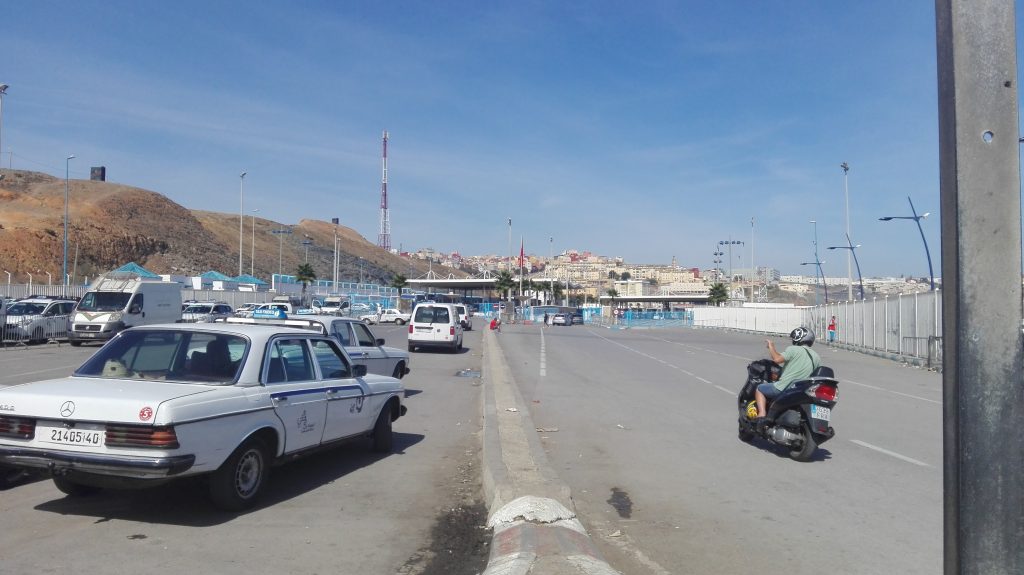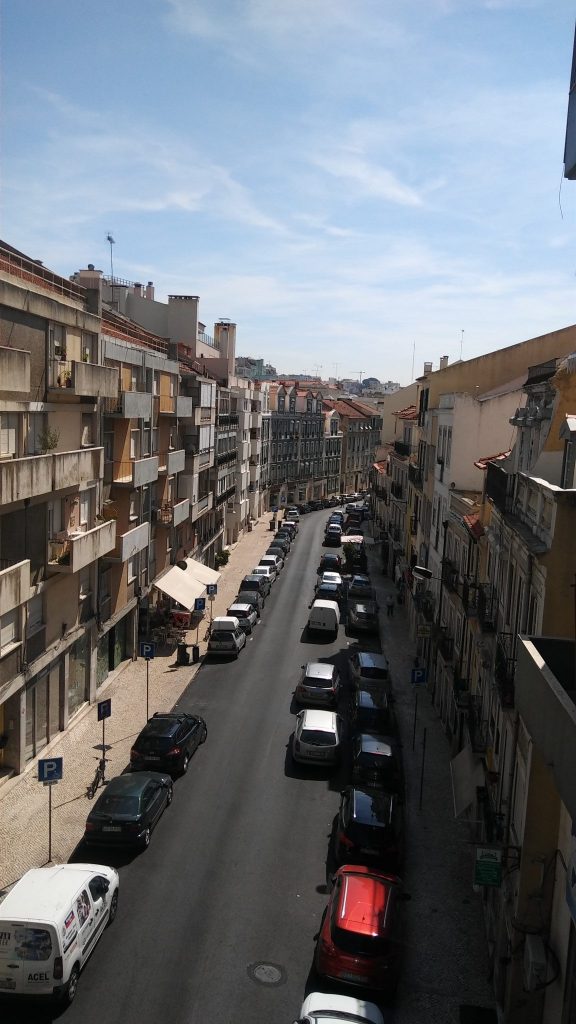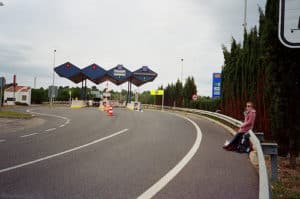Table of Contents
Crossing the Ceuta Border
Ceuta is an enclave on the Mediterranean leftover from Spain’s colonization of Morocco. Ceuta is legally Spain, which is why those traveling from the mainland can take a ferry over for about forty euro. Those going to Ceuta from Morocco, however, have to cross the land border.
Common issues
The border is a source of stress in nearby cities like Tetouan, and Martil and M’diq, which are smaller. This is because the people who are allowed to enter Spain vary from day to day. As the first rule, only the card-carrying residents of Tetouan can go into Ceuta without a visa. Even so, Tetouani people can be denied entry for arbitrary reasons such as public festivals and special events being hosted in Ceuta.
For non-Moroccans, seeing the conflict at the border can be overwhelming in addition to taking in the sights of old women weighed down with baggage which contains regular, household items with good resale value. Other times, no one is allowed to transport their bags into Morocco. When this is the case, crowds are reasonably arguing that they should be allowed to take their items back home into Morocco. The excitement gets chaotic.
Guide to Crossing the Ceuta Border
Most non-Moroccans are permitted to cross the Ceuta border at any hour. If you carry an EU or American passport in particular, touring Ceuta isn’t a great feat. Nonetheless, it is easy to become confused or lost at the border if you don’t know what you’re doing. As someone who has a passport full of stamps in and out of Ceuta, I have a few tips for you, assuming you’re going on foot and not in a vehicle, which is so much more complicated and time-consuming. I don’t recommend crossing with your own vehicle.

Getting there
Decide how you want to get to the area, located just outside the small beach town of F’nidiq. While there is a very inexpensive bus, its route does not go to the actual border, so you’d end up having to get a taxi the rest of the way anyway. Most people take a shared taxi directly to the border for about twenty dirham, or two dollars.
The crowd of salesmen
Once at the border, people will approach you with papers. Although these are papers you will eventually need to fill out and hand in to the guards, you do not have to buy them from the people trying to sell them to you — they are given for free inside.
Do know that the people trying to sell papers are generally trying to make an honest living. It is okay to buy a paper from them (two dirhams, twenty cents)and even to have them fill the information out for you (three dirhams, thirty cents), if you are okay with letting them copying it from your passport. The chances of them running off with your personal information are low considering the border is loaded with security and identity theft is too much of a long con for Moroccan scammers.
Guards
The first set of guards is right by the people asking you if you want papers. They’ll ask for your passport. Sometimes, there is a long line of Moroccan people waiting to show their ID, getting accepted or rejected either way, miraculously putting up with racism. It is fair to get in line with them, though I will say that if you are non-Moroccan, you have the privilege to skip the line, by just showing your passport. This obvious inequality is heinous, but it’s one of the many harsh realities of crossing the Ceuta border.
Leaving Morocco
Once past the first set of guards, there is a station with a window where you will need to either ask for papers and fill them out or have your papers filled out. Sometimes the lines are divided into one for “men” and another for “women”. Once at the front of your respective line, you get stamped out of Morocco.
You might see some Moroccans bypass the line because they have special permissions to do so. If you’re reading this, most likely, you are not one of those people and should just wait in line.
Entering Spain
There are several checkpoints after that initial station where you will be asked by guards to show your stamp. These checks are pretty quick and at the same time somewhat surreal as you see Moroccans waiting to be admitted inside.
Further in, you reach the Spanish guards. On an average day, the first set of Spanish guards give the say as to whether or not you can enter into Ceuta and if you look non-Moroccan, the following guards don’t usually pay much attention to you afterwards. I barely remember getting stamped into Spain after seeing this first set. That said, once you’re in, you’re in and you probably won’t be obliged for an entry stamp. If you are, just follow instructions. They ask, “¿barco?” as in, are you going to the ferry to mainland Spain. Just say no, either way. The Ceuta police rarely do bag checks, though the x-ray scanners are there.
Currency Exchange
So once in Ceuta, Spain, you’ll have the chance to exchange your currency. Those who can exchange your currency wear fisherman vests and hold calculators. Again, they are just making an honest living for themselves. If you don’t feel comfortable doing business with these guys, just wait until you get to the center of the city, where there are small currency exchange businesses.

Getting to Ceuta from the Border
In order to get to the city center, you can either take a taxi for eight euro or take the bus for eighty euro cents. The bus is the better option, in my opinion. The stop is right by the bench and it comes every twenty minutes. The taxis wait by the border.
All this is true unless the traffic is too busy. If there is too much congestion for a bus or taxi to make it to their stop, you have to walk about forty minutes towards the city center. This is where you’d want comfortable shoes. There aren’t steep slopes, but the duration of the walk demands sneakers, and sometimes an umbrella. The walk to the city follows the sidewalk.
Once in the Ceuta, enjoy the restaurants, bars, and shops. Should you be going to the barco, or ferry to mainland Spain, you can purchase tickets right at the ferry.





Thanks for writing this awesome article and examples helped alot..please keep on writing
Thank you for sharing information
I’m glad you liked it! Take care/ “tella frasik” as we say here.
Hmmm…would be interesting to know what the issues are bringing a vehicle in, I was planning a road trip down to Morocco for Xmas/NY and getting ferry from Spain to Ceuta and onwards over the land border but now having second thoughts as it sounds an ordeal, maybe its worth paying more to go over via Tangiers crossing…hmmmm
With a car, there is the hassle of traffic which can be 3 hours. I have heard it is difficult but I do not own a car myself and therefore don’t quite know. Tangier would most likely be easier with a vehicle. It depends on if you have more time than money or vice versa. Secondly, if you have a passport that allows you to travel to and fro easily like one from the EU or US, you should have an advantage either way.
Ah thanks for your pointers there, indeed due to your amazing post I did abit more digging and got confirmation that it is currently around 4hrs in a vehicle to cross the land border from Ceuta to Morocco so I have opted for Tangiers, you saved me a whole heap of wasted time so big thanks
4.5
Thanks a lot for this info. Very useful!! I’m taking my first trip to Ceuta in a couple days.
You’re right. Bringing your car is not a very good idea. Exiting ceuta can take 5 hours. They make you wait in a parking lot and depending on the volume of cars, you can be stuck there for more than 5 hours like what happened to me
Thank you for this, Teresa.
I have just read your article on my return from Ceuta and your advice and tips are absolutely spot on!
One further tip for the return on foot: don’t forget to get your passport stamped by Moroccan police on the way back. The police post is not very visible when you walk through ‘no man’s land’, and if you miss it, you will be sent right back to it after walking what feels like miles to the exit.
5
6
Hi there!
Did you have to xray your bags when passing through the moroccan side of the border? Or is the majority of the security /scanners on the spanish side once you get stamped out of Morocco?
I foolishly brought my drone without realizing they are banned in morocco, am trying to find a way to leave the country without it being confiscated. I think the land crossing at Ceuta will probably be my best bet.
So if anyone is reading this don’t bring your drone haha.
Thanks! This is a very well published guide and there is not a lot of information I have come across on the internet.
We’re going to Morocco from Spain this Christmas and I was toying with the idea of arriving in Ceuta; you’re post has helped–a lot! Thanks for the info.
U r welcome anytime
I am going to Ceuta this week alone. And i am interested to have a partner there
Good luck. Maybe try couchsurfing.
Do you have an idea when the borders open and when they close? Thanks
Great Post
Thank you for the article.
I was wondering how to get residency in Ceuta.
I understand this is technically Spain; however, there is no information on long stays in this state.
Great post Teresa! Thanks for the detail you put into the post!
Hello Teresa! It’s a nice article. I am planning to visit Morocco next year. And have put Ceuta on my bucket list. As a Philippine passport holder, do you think they will let me in? what documents do they ask at the border? I just want to see Ceuta, take photos and feel that Spanish vibe you know, and get back to Morocco afterwards.
I can’t say because I’m not in charge but they absolutely should.
Hello, I am a British passport holder and will be crossing the Morocco to Ceuta border in Fnideq in a couple of weeks. I have been reading in forums that Spain does not stamp passports which makes me a little worried as i need a stamp for entering and leaving shengen areas. Could someone clarify please
They’ve stamped me tons. That was my main reason for going to Ceuta. And a lot of immigrants / expats do the same.
Hola! Anyone by now experience with driving back by car from Morrocco into Ceuta, then the ferry to Spain onwards? Any customs tax information on bought goods?
Btw arrival from Spain into Ceuta into Morocco went fine! Simply some inefficient ~6 stops after each other, having to show our passport each time. It took about 1.5 hours but was easy. We received a paper which we will need to bring along upon return they said. Let’s see!
Hello,
Hola, I hope you are having a time in Morocco. Morocco is on my favourite travel destinations, mainly because it’s warm & friendly people.
I have taken a car into Morocco via the Algeciras/Tangier Med route a number of times and fairly straight forward, no long delays getting in & out of Morocco.
In August we will be taking the Algeciras\Ceuta route, for the 1st time & I would really appreciate you sharing details of your exit from Morocco via this route.
Thank you.
Hi we are Australian and need to leave Morocco and return in one day to get a further 90 day stay in Morocco.
we were advised by the police here in Marrakech that we can no longer apply for a visa extension but we may exit Morocco at Ceuta and re-enter Morocco.
Is this possible to do in one day from Tetouan via taxi ( 37 min drive) and return to Tetouan?
Has anyone done this in 2023?
Love some tips please?
Did you go? I’m going today! Idk if you will see this in time to respond but maybe will help others as well to share your experience….thank God my husbands brother is a police officer on the border (not to Ceuta though) but they said I can go for an hour and come back and it’s ok!
I’m a Ghanaian passport holder, can I get a Spanish visa at the border or when about to get my ferry tickets, pls I’ll like to know